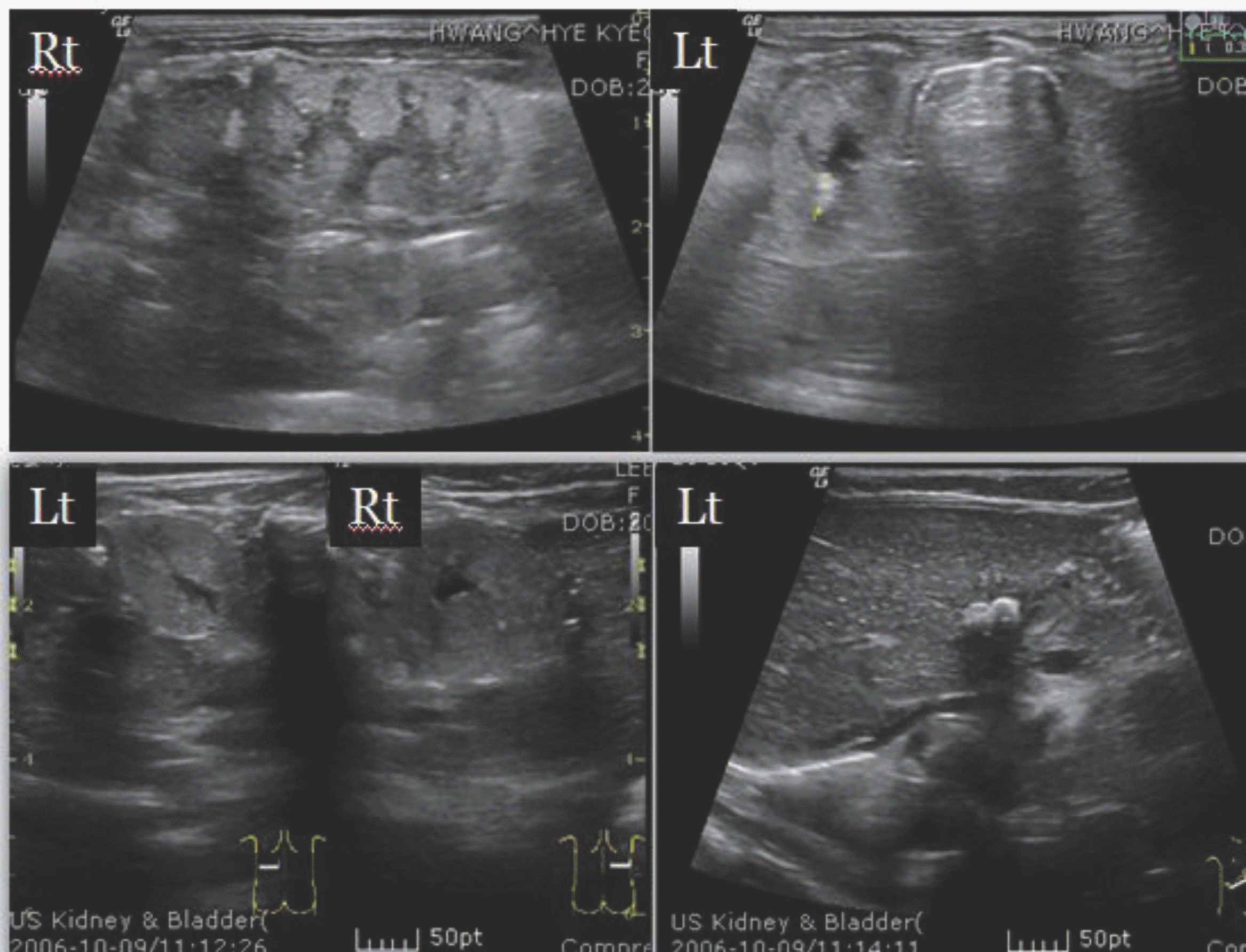Abstract
Purpose
The aim of this study was to determine the incidence, risk factors, and long-term outcome of nephrocalcinosis in very low birth weight (VLBW) infants.
Methods
A retrospective chart review was performed in VLBW infants between 2006 and 2012 in the neonatal intensive care unit.
Results
The incidence of nephrocalcinosis in VLBW infants was 10.2%. By univariate analysis, oligohydramnios and use of antenatal steroids were more frequent in the nephrocalcinosis group. In the nephrocalcinosis group, the gestational age and birth weight were lower and there were more number of female infants. Also, the initial blood pH, the lowest systolic blood pressure, and urine output on the first day of life were lower and bronchopulmonary dysplasia, sepsis, and urinary tract infection were more prevalent in the nephrocalcinosis group. The use of dexamethasone or ibuprofen and the lowest levels of phosphorus, protein and albumin were significantly lower in the nephrocalcinosis group. By binary logistic regression analysis, the use of antenatal steroids, female sex, 5-minute Apgar score, duration of oxygen therapy and total parenteral nutrition, and the lowest albumin level were found to be significant risk factors for nephrocalcinosis. Overall, the resolution rate was 64.1% and 88.6% within 12 months and 18 months, respectively.
Go to : 
 | Fig. 1.Renal ultrasonographic findings at two months of life showed nephrocalcinosis in both kidneys (a maximum diameter of 3.5 mm in the left kidney) with normal renal echogenicity and size (upper two). At four and a half months of life, diffuse nephrocalcinosis (large calculi in the left kidney) and decreased size of both kidneys, more marked in the left kidney (left 2.8x1.4 cm, right 8x8 cm) with loss of corticomedullary differentiation suggesting chronic renal parenchymal disease was noted (lower two). |
Table 1.
Baseline characteristics of mothers and their infants
| Variables | NC group (n=52) | Control group (n=458) | P-value |
|---|---|---|---|
| Mother | |||
| Age (years), mean (range) | 31.5 (19–40) | 31.3 (17–45) | 0.38 |
| Oligohydramnios (AFI < 5), n (%) | 7 (13.5) | 27 (5.9) | 0.04 |
| Use of antenatal steroids, n (%) | 37 (71.2) | 243 (54.3) | 0.04 |
| PPROM (≥ 18 hours) | 12 (23.1) | 150 (32.8) | 0.08 |
| GDM or overt DM, n (%) | 4 (7.7) | 16 (3.5) | 0.09 |
| Histologic chorioamnionitis | 20 (38.5) | 151 (33.0) | 0.65 |
| Hypertensive diseases∗, n (%) | 11 (21.2) | 97 (21.2) | 1.00 |
| Infants | |||
| GA (weeks), mean (range) | 27.6 (25.1–34.6) | 29.6 (23.7–36.4) | <0.01 |
| BW (g), mean (range) | 998.7 (470–1,480) | 1,186.1 (570–1,490) | <0.01 |
| Small for gestational age, n (%) | 10 (19.2) | 74 (16.2) | 0.57 |
| Female, n (%) | 32 (61.5) | 210 (45.9) | 0.03 |
| 1- min Apgar score, mean (range) | 4.5 (0–10) | 5.2 (0–10) | 0.06 |
| 5-min Apgar score, mean (range) | 6.4 (1–10) | 7.4 (1–10) | 0.01 |
| Initial blood pH, mean (range) | 7.28 (6.94–7.47) | 7.32 (6.56–7.61) | 0.04 |
| Lowest systolic BP on day 1 (mmHg), mean (range) | 35.0(21–65) | 39.3 (21–75) | <0.01 |
| Urine output on day 1 (ml/kg/hr), mean (range) | 2.1 (0.6–3.9) | 2.8 (0.3–10.2) | 0.01 |
Table 2.
Morbidities among very low birth weight infants
Table 3.
Supportive care and drug treatment
Table 4.
Laboratory findings on admission, 2nd weeks, and 4th weeks of life
Table 5.
Significance of risk factors by binary logistic regression analysis




 PDF
PDF ePub
ePub Citation
Citation Print
Print


 XML Download
XML Download